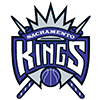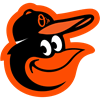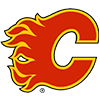The overused quote reads, "Absence makes the heart grow fonder." We have all found that out the hard way when it comes to sports during this pandemic. While certainly much lower on the totem pole than health, safety and economic well-being, this hiatus has made us yearn for our national pastime. For some, it represents livelihood lost. For others, it represents what could be a much-needed distraction from enduring these unique conditions.
With the Korean Baseball Organization (KBO) playing live games, though, and the United States slowly starting to re-open, the promise of baseball returning to the states is exciting. Envisioning a July 4 opening, complete with pageantry and fireworks, may even be plausible; however, we all likely would be relegated to watching from the couch. Still, logistics aside, we have to stay safe, stay vigilant, but stay positive. Where there is a will, there is a way.
OK, enough with the clichés. Let's get to the players featured in this week's edition of the Minor League Barometer.
UPGRADE
George Kirby, P, SEA – The Mariners have done a superb job in restocking their farm system on the hitting side, with exceedingly high upside bats in Julio Rodriguez, Jarred Kelenic and Noelvi Marte, along with "ready now" prospects in Kyle Lewis, Evan White and Jake Fraley. The pitching revamp has been less successful, though I am a big fan of Logan Gilbert and Justin Dunn. Brandon Williamson should help, but the real prize came
The overused quote reads, "Absence makes the heart grow fonder." We have all found that out the hard way when it comes to sports during this pandemic. While certainly much lower on the totem pole than health, safety and economic well-being, this hiatus has made us yearn for our national pastime. For some, it represents livelihood lost. For others, it represents what could be a much-needed distraction from enduring these unique conditions.
With the Korean Baseball Organization (KBO) playing live games, though, and the United States slowly starting to re-open, the promise of baseball returning to the states is exciting. Envisioning a July 4 opening, complete with pageantry and fireworks, may even be plausible; however, we all likely would be relegated to watching from the couch. Still, logistics aside, we have to stay safe, stay vigilant, but stay positive. Where there is a will, there is a way.
OK, enough with the clichés. Let's get to the players featured in this week's edition of the Minor League Barometer.
UPGRADE
George Kirby, P, SEA – The Mariners have done a superb job in restocking their farm system on the hitting side, with exceedingly high upside bats in Julio Rodriguez, Jarred Kelenic and Noelvi Marte, along with "ready now" prospects in Kyle Lewis, Evan White and Jake Fraley. The pitching revamp has been less successful, though I am a big fan of Logan Gilbert and Justin Dunn. Brandon Williamson should help, but the real prize came in the form of Kirby in last year's draft. Widely considered the top hurler in the class, Kirby's brief stint with short-season Everett did nothing to dispel that notion, as he posted a 2.35 ERA and 25:0 K:BB in 23 innings. Kirby has ideal size, elite command and four pitches. Although he came from a small school (Elon), his control will play anywhere, and he could be aggressively pushed through the ranks if the season ever resumes. Kirby could be anchoring the Mariners rotation as early as 2021.
Josh Lowe, OF, TB – It seems like the only thing holding back the athletic younger brother of Nate Lowe is the bad contract the Rays gave Kevin Kiermaier. The frugal organization splurged on a six-year, $53.5 million deal before the 2017 season, and while Kiermaier's glove remains a plus, his hitting leaves much to be desired. Enter Lowe, just 22, much cheaper and coming off a career season in the minors. He batted .252/.341/.442 with 18 home runs and 30 steals in 121 games at Double-A. Lowe did strike out a bit too much, but he was one of the younger players at that level, and still more than held his own, including when it came to taking free passes. While the Rays do not appear willing to give up on Kiermaier just yet, and Lowe is not quite ready for primetime, it shouldn't be long before the Rays opt for the cheaper , healthier version who appears to be a better hitter in the long run.
Braxton Garrett, P, MIA – Garrett put himself back on the prospect map last season, after becoming a largely forgotten phenom following Tommy John surgery in the middle of 2017. A first-round pick in the 2016 draft, Garrett shined as a 21-year-old at High-A in 2019, posting a 3.34 ERA and 118:37 K:BB in 105 innings. He kept the ball down and induced plenty of weak contact, though he also served up 13 long balls in 20 starts. The southpaw should start at Double-A when the season resumes. He has three pitches, which includes a plus curveball as well as a fastball that could still gain a few ticks in velocity. With an emerging changeup, Garrett has significant upside and is yet another arm to watch in the Marlins system.
Geraldo Perdomo, SS, ARI – The switch-hitting shortstop impressed as a teenager between Low-A, High-A and the AFL in 2019. Perdomo has the ability to hit for average and swipe some bags. The projection comes in terms of his power stroke. While he does not have many home runs to his credit during his brief time in the minors, Perdomo is 6-foot-3, and at 185 pounds has room to grow, mature and increase his power production. In other words, the Diamondbacks expect his power to come around sooner than later. If that happens, Perdomo will shoot up near the top of the prospect rankings, even with the bevy of talented shortstops stashed in the minors. As it is, he has shown plenty of promise.
CHECK STATUS
Cory Abbott, P, CHC – Abbott has found little resistance this far since entering the minors in 2017. A second-round pick out of Loyola Marymount, Abbott has averaged more than a strikeout per inning during his brief time as a professional and has not recorded an ERA higher than 3.01 at any level since the beginning of 2018. At Double-A in 2019, Abbott notched that 3.01 ERA as well as a 166:52 K:BB in 146.2 innings. He led the Southern League in strikeouts while also posting the third-lowest ERA among qualified starters. Abbott's repertoire contains four pitches, though he does not throw particularly hard and can lose command at times. Still, batters hit a putrid .210 against him, so he managed to limit the damage overall. It does not look like Abbott will get a taste of the big leagues this year due to the hiatus, but he could be given a flier in 2021, especially due to his advanced prospect age (24).
Cole Sands, P, MIN – Sands had three stints on the injured list last year, after battling biceps tendinitis following being drafted in 2018. When he was on the mound, though, Sands delivered in spades. He swept through three levels, finishing at Double-A. He compiled a 2.68 ERA and 108:19 K:BB in 97.1 innings. Sands showed standout control at each level, while also possessing the ability to miss bats. The younger brother of former Cubs prospect Carson Sands, Cole has three pitches (fastball, changeup, curveball). His heater rises in the zone and can get into the mid-90s. A fifth-round pick out of Florida State, perhaps his statistics did not quite do him justice in Tallahassee. Cole is still just 22 and could see the big leagues as early as next season. He needs to prove he can stay healthy, though, and also that he can continue to miss bats against better competition as he pounds the strike zone.
Gabriel Arias, SS, SD – Arias had a breakout season at High-A despite being the second-youngest player in the league at age 19. Arias batted .302 with 17 home runs, 75 RBIs and eight steals in 120 games in the California League. There are a few drawbacks worth mentioning, though. Arias fanned 128 times over that span while drawing just 25 walks. It also remains to be seen if the home run power will stick outside of the hitter-friendly confines in which he played in 2019. Add in that Fernando Tatis Jr. looks to be the shortstop of the present, future and beyond for the Padres at the big-league level, and there is also the question of where he will eventually fit within the San Diego organization. Still, Arias hit higher than .300 and showed plenty of pop as a teenager at High-A. That makes him worth monitoring regardless.
Shawn Dubin, P, HOU – Dubin turned 24 following the 2019 campaign, so he is older than the more traditional prospects talked about in this article. He also took a long, winding path to the big leagues. He attended three colleges in four years, finishing at Georgetown (not that one) in Kentucky. The NAIA All-American was drafted in 2018 in the 13th round, so last year was his first full season in the minors. Dubin responded by dominating against younger, less experienced competition, notching a 151:46 K:BB in just 110.2 innings, mostly at High-A. There is some question as to whether he will end up as a starter or in the bullpen, but of his 25 appearances in 2019, 19 were starts. He is listed at 6-1, 155, so his frame is concerning in terms of whether he can withstand the rigors of being in the big-league rotation. Nevertheless, he has a wicked slider, mid-90s heater along with an improved curveball and changeup. How Dubin handles Double-A, and if he can pitch more than 125 innings in a season, will go a long way toward determining his future path and role.
DOWNGRADE
Tyler Stephenson, C, CIN – Stephenson looks like he will be a better real-life player than fantasy commodity. He did hit .285 with a .372 on-base percentage in 89 games at Double-A last season, and that certainly provides some value. However, that was the highest he ever hit since being drafted in the first round in 2015, and he managed only six home runs in 2019. His career-high 11 home runs was set at High-A the season prior. His power stroke has not come around, and at 23 and 6-4, 225, there's not really much more room for physical growth. While catching prospects are scarce, and he is still considered a top-10 catcher by most, his value outside of OBP leagues does not seem rather high. He has also battled health issues, which bears mentioning. Veteran depth ahead of him combined with the uncertainty of the 2020 season looks like he will have to wait until next year to see the big leagues as well.
Jahmai Jones, 2B, LAA – Jones went from arguably the top prospect in the Angels system to outside the top 10 organizationally with an abysmal 2019 campaign. In 130 games at Double-A, Jones slashed just .234/.308/.324 with five home runs and nine steals. That represents back-to-back years in which he hit .245 or lower. He also hit half as many home runs as the season prior and was caught stealing more times than he was successful in 2019. Despite the struggles, Jones was sent to Triple-A prior to the stoppage, but there is little optimism that Jones will perform any better than the last two years. He has only decent speed, little pop and his best asset appears to be his ability to take a walk, which does not help much in standard leagues. He will need a big season to turn his prospect status around.
Ryan Rolison, P, COL – Ah, the perils of being a pitching prospect in the Rockies farm system. Rolison is the de facto No. 1 pitching prospect for the Rockies, a first-round pick in the 2018 draft. He pitched the majority of the season in the hitter-friendly confines of the California League, so his figures need to be taken with a grain of salt. That said, will pitching half of his games in the thin air in Colorado be any different? Rolison notched a 4.87 ERA in 22 starts, posting a 118:38 K:BB in 116.1 innings. The strikeouts are solid, but Rolison also served up 22 home runs, while the opposition hit .278 against him. He finished in the bottom third of qualified starters in terms of ERA for the season. Rolison likely will be thrilled to move on to Double-A, but expectations must be tempered given his mediocre season at High-A along with his future home field.
William Contreras, C, ATL – Do not expect this backstop to develop into the hitter his brother, Willson Contreras has become. This 22-year-old catcher had a down year in the Braves organization, splitting time between High-A and Double-A. William hit a combined .255/.315/.354 with just six home runs in 110 games. His power numbers and average decreased from the season prior. Though Contreras does not strike out a ton, he also does not walk much. Despite his contact skills, that has not translated to hitting for average the last couple seasons for the younger Contreras. William's next stop will be Triple-A, but he has lost much of his luster.



























